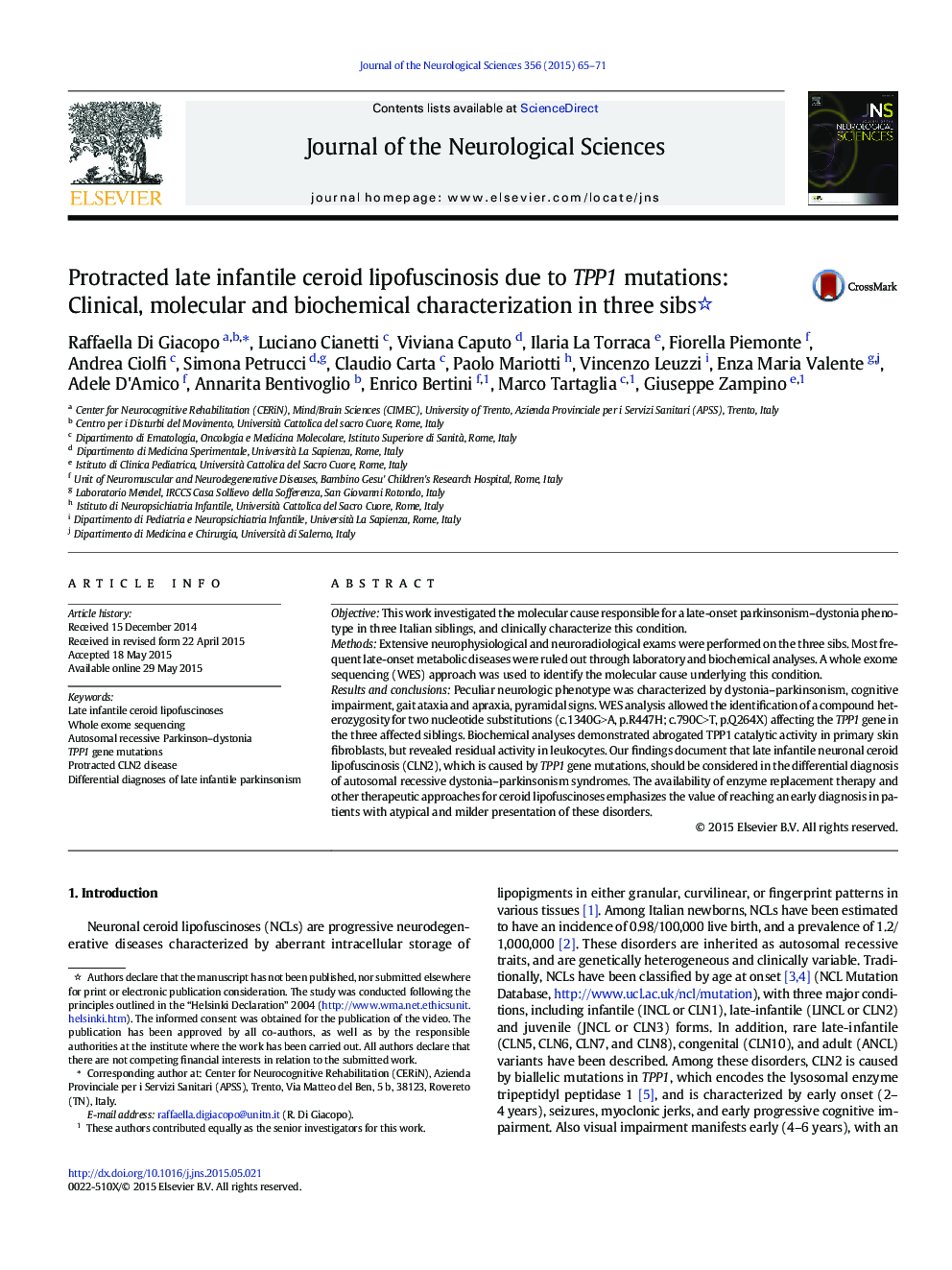| Article ID | Journal | Published Year | Pages | File Type |
|---|---|---|---|---|
| 8275365 | Journal of the Neurological Sciences | 2015 | 7 Pages |
Abstract
Peculiar neurologic phenotype was characterized by dystonia-parkinsonism, cognitive impairment, gait ataxia and apraxia, pyramidal signs. WES analysis allowed the identification of a compound heterozygosity for two nucleotide substitutions (c.1340G>A, p.R447H; c.790C>T, p.Q264X) affecting the TPP1 gene in the three affected siblings. Biochemical analyses demonstrated abrogated TPP1 catalytic activity in primary skin fibroblasts, but revealed residual activity in leukocytes. Our findings document that late infantile neuronal ceroid lipofuscinosis (CLN2), which is caused by TPP1 gene mutations, should be considered in the differential diagnosis of autosomal recessive dystonia-parkinsonism syndromes. The availability of enzyme replacement therapy and other therapeutic approaches for ceroid lipofuscinoses emphasizes the value of reaching an early diagnosis in patients with atypical and milder presentation of these disorders.
Keywords
Related Topics
Life Sciences
Biochemistry, Genetics and Molecular Biology
Ageing
Authors
Raffaella Di Giacopo, Luciano Cianetti, Viviana Caputo, Ilaria La Torraca, Fiorella Piemonte, Andrea Ciolfi, Simona Petrucci, Claudio Carta, Paolo Mariotti, Vincenzo Leuzzi, Enza Maria Valente, Adele D'Amico, Annarita Bentivoglio, Enrico Bertini,
